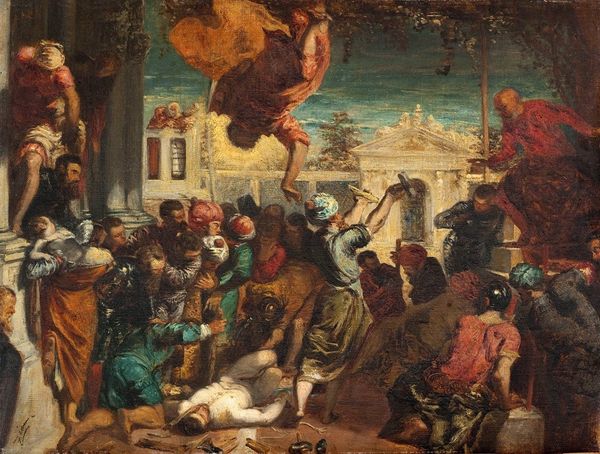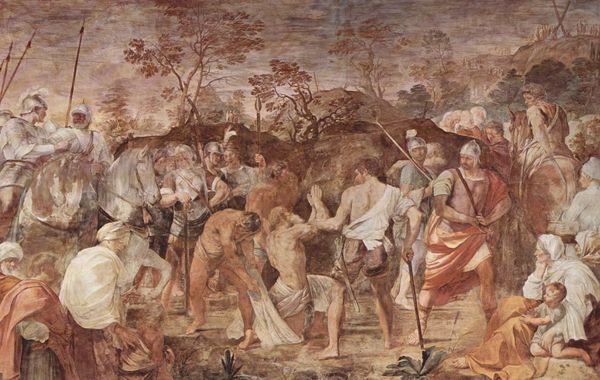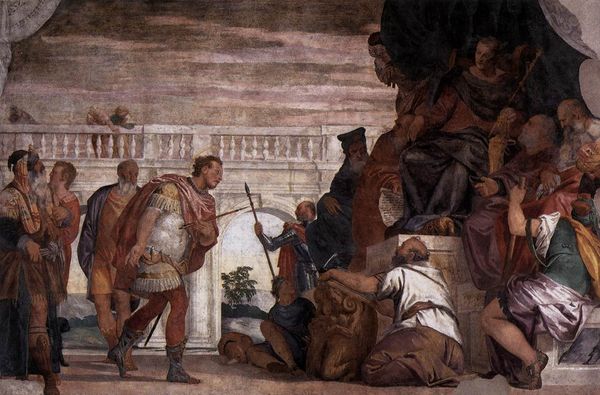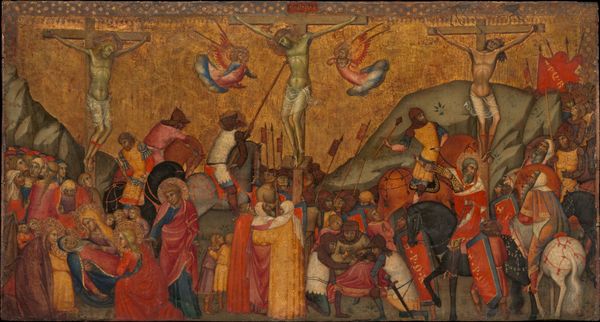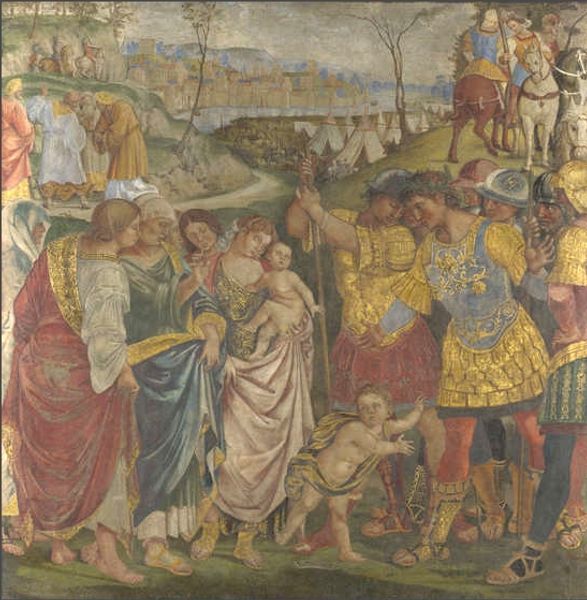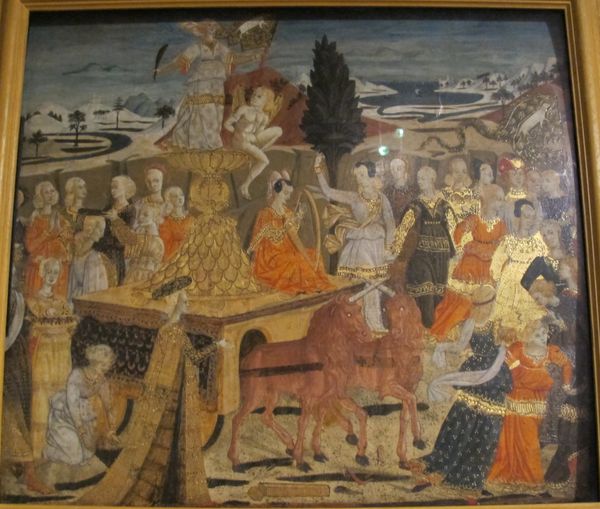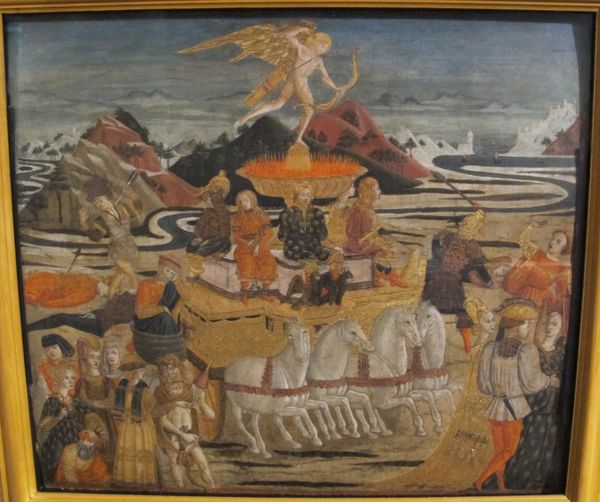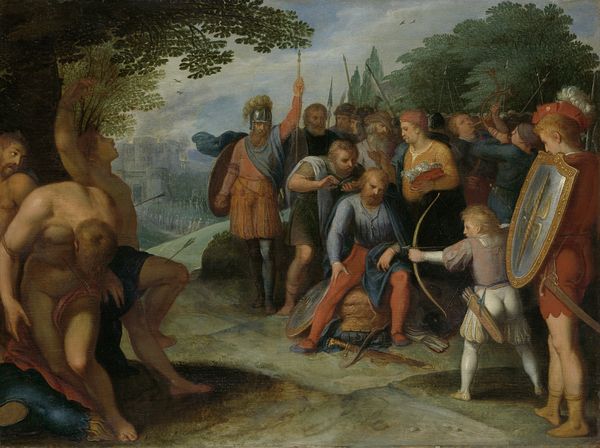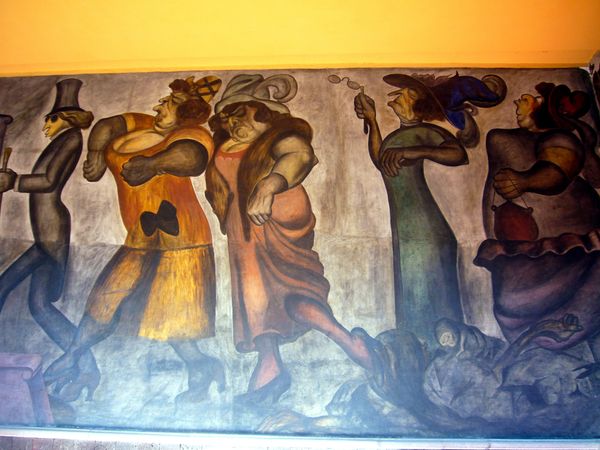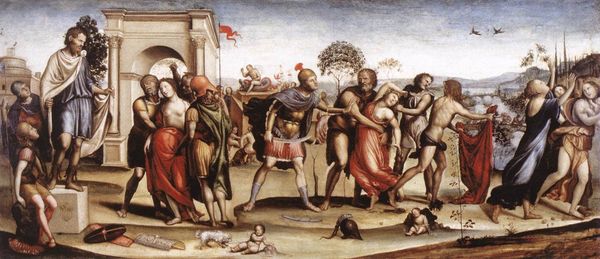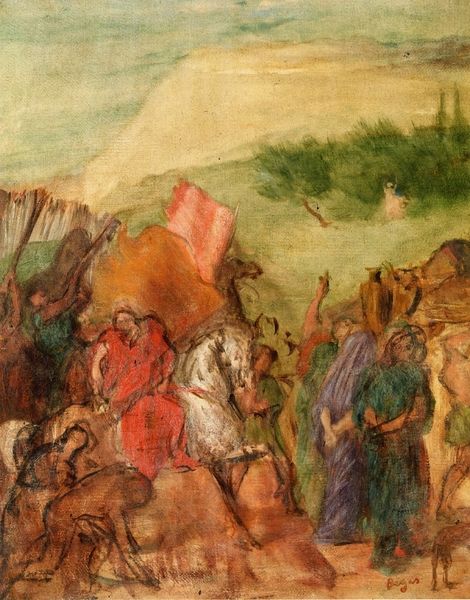
oil-paint
#
narrative-art
#
oil-paint
#
classical-realism
#
figuration
#
oil painting
#
mythology
#
history-painting
#
italian-renaissance
Copyright: Public domain
Editor: Here we have Palma Vecchio’s "The Triumph of Caesar" from around 1510, rendered in oil. It’s teeming with figures, a real sense of spectacle. What strikes me most is how it feels almost stage-like, everyone seems arranged for viewing. How do you interpret this work, particularly regarding the enduring power of its imagery? Curator: The 'triumph' motif is itself a loaded symbol, Editor, harking back to Roman power. This scene isn’t merely celebratory; it's about projecting dominance and establishing cultural continuity. The laurel wreaths, the array of military standards… these are all carefully chosen visual cues meant to evoke the grandeur of the past and the power dynamics of the present. Note how the figures are rendered with distinct attributes, recalling archetypes – does that resonance impact you? Editor: Yes, the archetypes do add weight to it, definitely moving beyond just a historical depiction. There's a clear attempt to imbue the scene with almost mythical significance. It seems to want to communicate values – courage, strength, victory, almost like propaganda. Curator: Precisely! Consider the repetition of certain forms and colours – a means of reinforcing these ideals, embedding them in the viewer’s mind. Renaissance artists frequently utilized classical motifs not just for aesthetic reasons, but also to align themselves with a perceived golden age and reinforce social structures. Do you feel it effectively connects past to present? Editor: It certainly feels like it is attempting to construct a continuous narrative of power. Looking at it now, the theatrical composition does more than simply portray history; it actively participates in constructing a specific version of it. Curator: Indeed. Symbols create echoes across time, reminding us that images have their own persuasive language, capable of shaping perception across centuries. Editor: This has broadened my perspective considerably. I now see how historical paintings of this era function beyond their immediate aesthetic value. Curator: And I have confirmed that youthful eyes bring ever new appreciation.
Comments
No comments
Be the first to comment and join the conversation on the ultimate creative platform.

